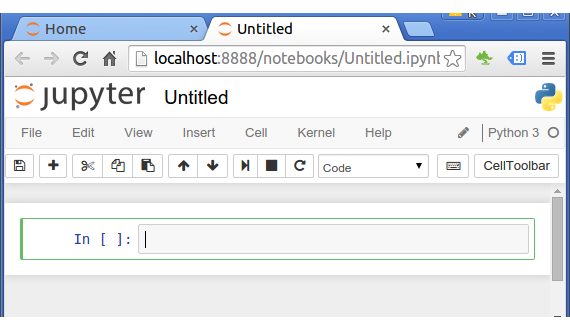

Uploading a big file to AWS S3 using boto module Simple tool - Google page ranking by keywords Python Unit Test - TDD using unittest.TestCase class Image processing with Python image library Pillow Python Network Programming IV - Asynchronous Request Handling : ThreadingMixIn and ForkingMixIn Python Network Programming III - Echo Server using socketserver network framework Python Network Programming II - Chat Server / Client Python Network Programming I - Basic Server / Client : B File Transfer Python Network Programming I - Basic Server / Client : A Basics REST API : Http Requests for Humans with Flask Web scraping with Selenium for checking domain availability Python HTTP Web Services - urllib, httplib2

MongoDB with PyMongo I - Installing MongoDB. Connecting to DB, create/drop table, and insert data into a table Priority queue and heap queue data structure Python Object Serialization - yaml and json Python Object Serialization - pickle and json Sets (union/intersection) and itertools - Jaccard coefficient and shingling to check plagiarismĬlasses and Instances (_init_, _call_, etc.)īits, bytes, bitstring, and constBitStream

Strings - Escape Sequence, Raw String, and Slicingįormatting Strings - expressions and method calls Object Types - Numbers, Strings, and None Running Python Programs (os, sys, import) To close the Notebook server, go to the OS terminal where we launched the server from, and press Ctrl + C. Other common use-cases include keeping track of our interactive session (like a lab notebook), or writing technical documents that involve code, equations, and figures. The Notebook is most convenient when we start a complex analysis project that will involve a substantial amount of interactive experimentation with our code. Most of the time, you will want to start a notebook server in the highest directory in your filesystem where notebooks can be found. "When the notebook opens, you will see the notebook dashboard, which will show a list of the notebooks, files, and subdirectories in the directory where the notebook server was started (as seen in the next section, below). It will then open default web browser to this URL. This will print some information about the notebook server in terminal, including the URL of the web application (by default, ). We can start the notebook server from the command line: Now that we have installed Jupyter Notebook, we are ready to run the notebook. To PATH in your /home/k/.bashrc ? Įxport PATH="/home/k/anaconda3/bin:$PATH"Īnd then using Anaconda and conda to install Jupyter: Python 3.5.1 :: Continuum Analytics, Inc.ĭo you wish the installer to prepend the Anaconda3 install location We'll install "Anaconda for Linux" for Python 3.5: To install Jupyter via traditional pip, skip this section, and go to Ipython and Jupyter Notebook Install via pip.Īnaconda conveniently installs Python, the Jupyter Notebook, and other commonly used packages for scientific computing and data science. To install Jupyter, in this section, we'll install Jupyter via Anaconda as recommended by Jupyter Doc. Jupyter (Julia, Python and R) Install via Anaconda


 0 kommentar(er)
0 kommentar(er)
